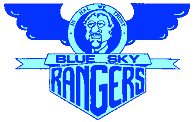Lock 'N' Chase®
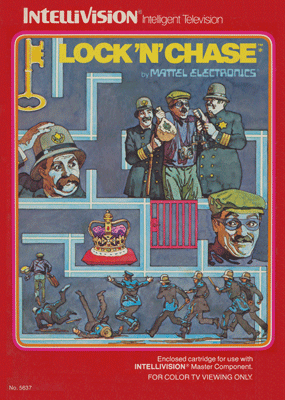
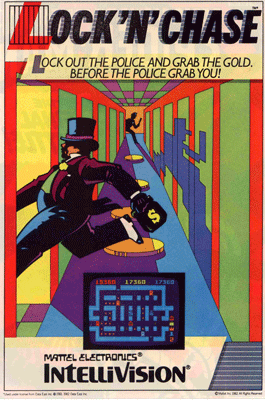
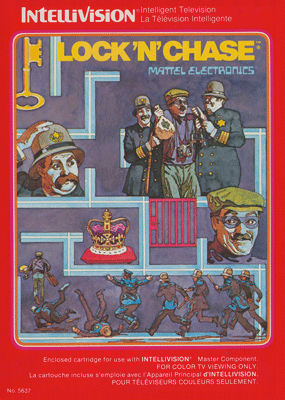
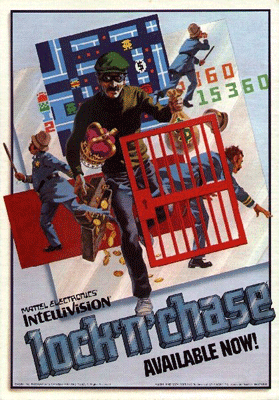
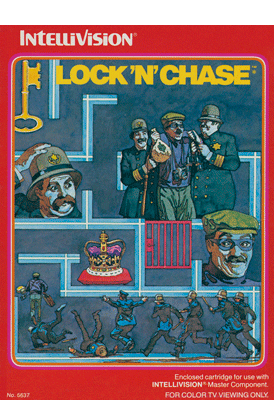

INTELLIVISION CARTRIDGE [Mattel Electronics #5637]
Release #34 July 9, 1982
Based on the Data East arcade game
Program: Mike Winans, Julie Hoshizaki
Graphics: Peggi DeCarli
Sound: Bill Goodrich
Package Illustration: Jerrol Richardson
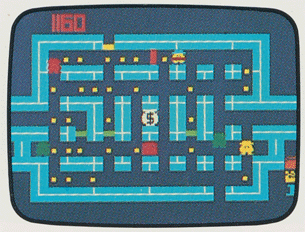
PRODUCTION HISTORY
Lock 'N' Chase was the first in a series of conversions based on Data East arcade games, a series that eventually would include Bump 'N' Jump, BurgerTime, Mission X, Thin Ice (based on the arcade game Disco No. 1) and the unfinished PizzaTime (a BurgerTime sequel). The association carried over to INTV Corporation, which did Commando and Diner (another BurgerTime sequel).
Mike Winans almost killed himself trying to fit the game into 4K. He finally proclaimed it couldn't be done and, reluctantly, 6K was authorized. Mike managed to just squeeze it into the 6K, although the control of Lupin wasn't ideal. (In the arcade game, the thief is named Lupin, a nice touch of personality that Mattel left out of our version.)
When the game was released, press and customers complained about how difficult it was to control Lupin. (You had to time turns precisely, or Lupin would stop dead.) The problem was considered bad enough that a running change was ordered: after the 6K cartridges were sold out, improved 8K versions would be released. By this time, Mike had transferred to the Design & Development department, so Julie Hoshizaki was assigned to make the improvement. The improved versions aren't marked on the package; the easiest way to tell if you have an improved version is to watch what happens when a cop catches Lupin. In the arcade game, Lupin collapses into his hat -- an animation there wasn't room for in the 6K version. The collapsing animation is in the 8K version.
An M Network a Atari 2600 Version and an Apple II version were also released. IBM PC and Aquarius versions were announced, but never completed.


